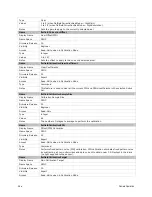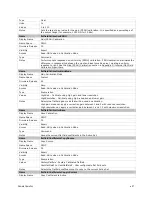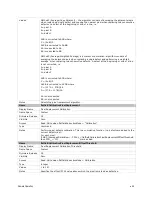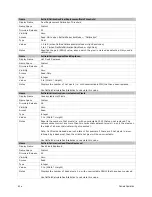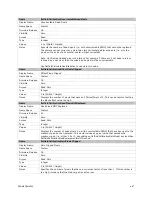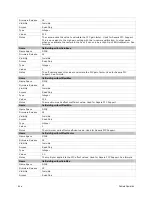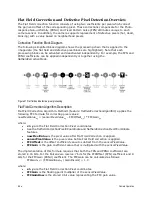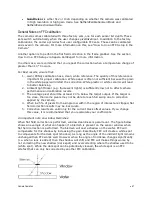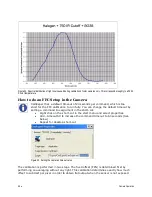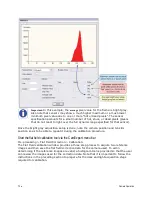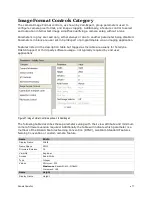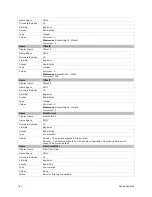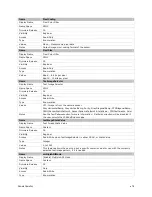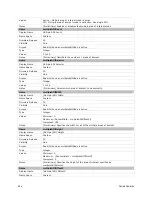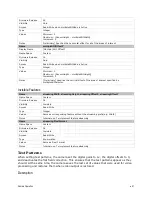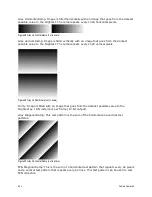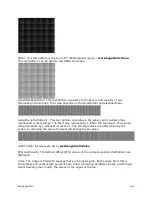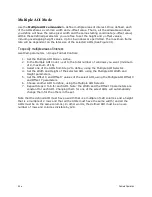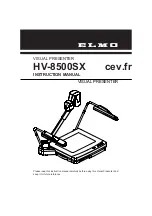
70
•
Camera Operation
2.
The camera is placed in the dark and
FPN
Calibration is run.
3.
With FPN correction on the sensor is illuminated (Light Source: Broadband Quartz
Halogen, 3250 K, with a 750 nm cut-off filter) with a light level of 26.4 µW/cm
2
(10
BPP). This ensures each camera will have the same responsivity since the light level
and target value are always the same. Typical output levels for the camera at this
light level are 680 DN (10 bit).
4.
The sensor window at this point has been cleaned thoroughly such that there are no
significant blemishes present.
5.
For the monochrome camera only, PRNU target is set to 840 DN (82.11 % peak).
6.
PRNU calibration is run.
How can one match gain and offset values on multiple cameras?
One way is of course to use flat field correction. All cameras would be set up under the
same conditions, including lighting, and then calibrated with FPN and PRNU. This process
can be time-consuming and complicated (especially the white target). Another way is to use
global FPN (Sensor Control > Black Level Selector > DigitalAll1):
1.
Starting from factory settings (factory flat field), take note what the highest dark
offset is among the set of cameras. If the highest dark offset is higher than about 16
DN (10 bit) you might want to consider recalibrating the FPN correction. You can use
the histogram feature in CamExpert to determine this value see Figure 24. Large
differences in dark offset between the factory and user are typically caused by
differences in temperature from factory to user. Large dark offsets will result in
PRNU-correction-induced FPN and should therefore be avoided.
2.
Decrease global FPN (increase the offset in dark) on all cameras until they are the
same and reach at least 4 DN (10 bit).
3.
Illuminate to about 80 % saturation (820 DN, 10 bit) and note the highest signal
level among the set of cameras.
4.
Increase the system gain (Sensor Control > Gain Selector > DigitalAll1) on the
cameras until they all reach the same output level (highest of all cameras).
5.
Place camera in the dark and repeat step 2 to 4 until both dark offset and 80 % sat
signal levels are equal on all cameras.
Hot Pixels and Long Exposure Times
The camera is calibrated and optimized for an exposure time of 1500 microseconds
providing peak FPN and PRNU performance are at this setting. This FPN correction also
manages hot pixels for the same exposure time. Changing the exposure time to very long
times, such as 60000 microseconds, can introduce additional uncorrected hot pixels in the
image. The user can eliminate these pixels by performing a user pixel replacement
calibration which will capture and correct these pixels. This correction eliminates hot pixels
at long exposure time while maintaining the same FPN characteristics.
How to do a FFC Setup via Sapera CamExpert
The Sapera LT CamExpert tool provides an easy GUI based method for a user to perform a
Flat Field Calibration. The process first requires the user to plan acquisitions in dark and
bright conditions, followed by the FFC process itself. Please review the list of best practices
in the
General Notes on FFC calibration
section. The steps to perform a FFC calibration using
CamExpert are detailed below.
Verify a dark acquisition

